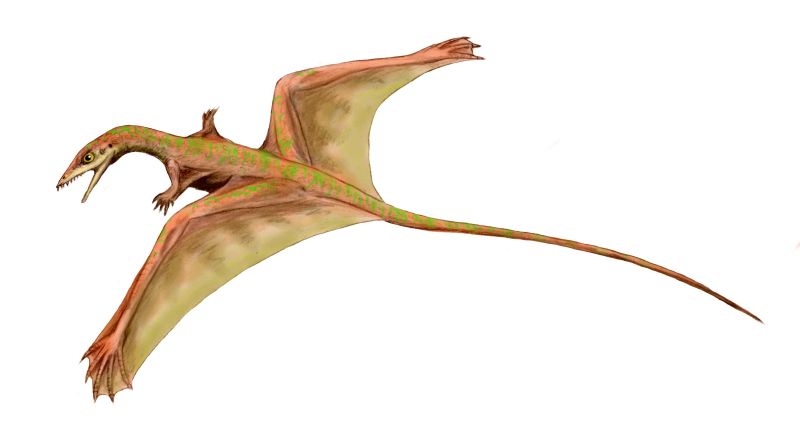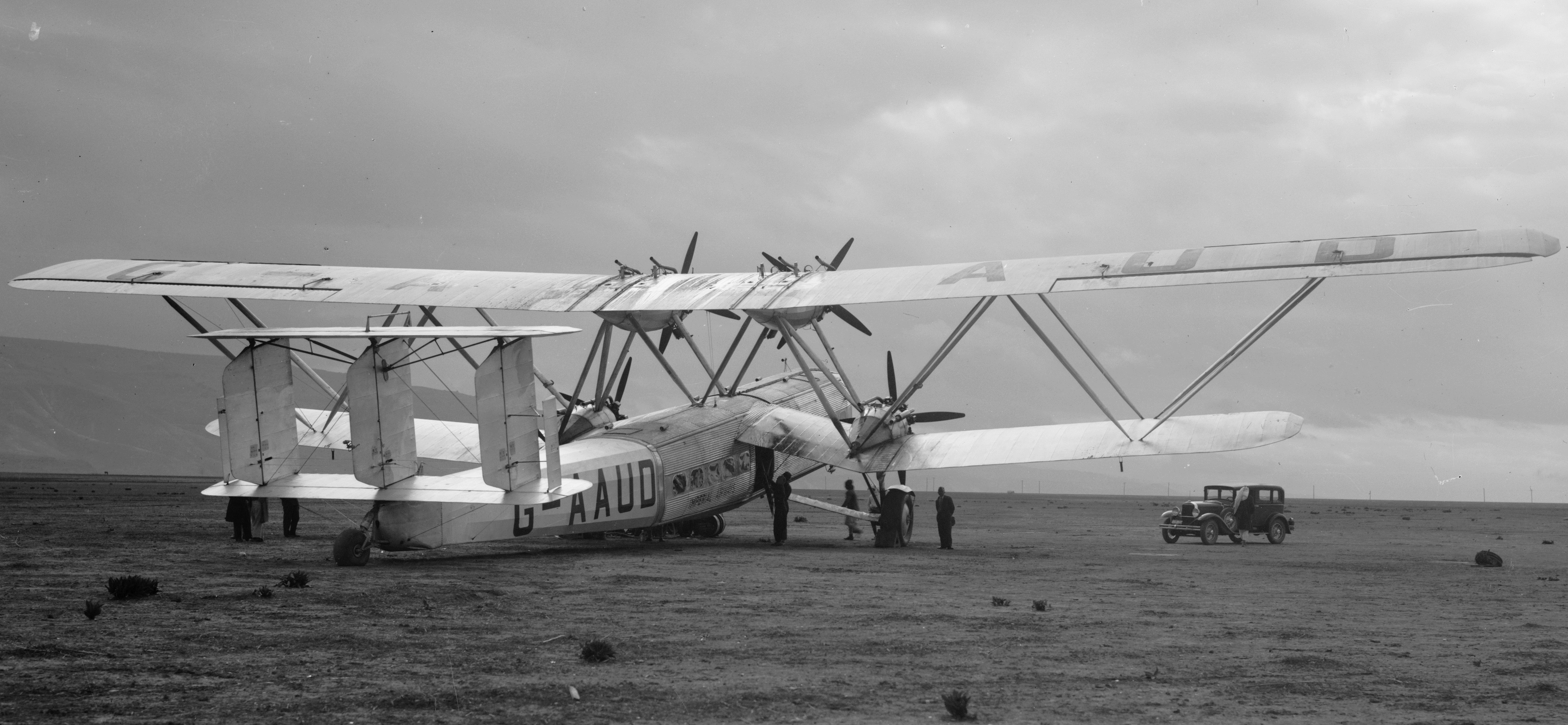For instance, a paper came out describing the prevalence of large leg feathers in Mesozoic avialans, finding evidence of pennaceous feathers on the tibiotarsi of several confuciusornithid and enantiornithine specimens as well as on the metatarsals of Sapeornis. In fact, almost all coelurosaurs that preserve integument on the lower legs and feet have feathers there, with plumulaceous leg feathers and extensive foot scales (as in most modern birds) known only in Yanornis and more derived taxa. It is perhaps no accident that this is also the point in avialan phylogeny that a tail fan homologous with those of modern birds is known to have been present. (On that subject, the new Sapeornis specimen also preserves tail feathers, previously unknown in this genus, but that's a story for a different time.)
 |
| New specimen of Sapeornis showing hind limb feathers, from Zheng et al, 2013. |
The implications of this are quite clear. After all, what else has four wings?
 |
| The pterosauromorph Sharovipteryx mirabilis, licensed. |
 |
| The anisopteran insect Hemicordulia tau, photographed by Fir0002 and licensed. |
 |
| The chiropteran Agilichiropteryx johtoensis. |
 |
| The biplane Handleyvolans hannoi. |
That's right, a new analysis shows that it's looking likely that flight evolved only once in the entire history of life, all flying organisms being united in a clade now called Volantia. Aside from the common biplane design, the monophyly of this group is supported by many other previously overlooked features. (I didn't look at the data matrix, but the study listed so many synapomorphies I figured it simply must be correct.) For example, the clade is also united by the ancestral characteristics of echolocation (still retained in swifts, oilbirds, planes, and most bats), being capable of learning the move Wing Attack (secondarily lost in planes due to their stiff wing structure)*, and eating foods widely considered to be disgusting in Western society (such as insects, rotting carcasses, and aviation fuel). In an interesting example of convergence, all five major clades of Volantia are all known to have independently evolved two-winged forms later on. This discovery is also further refutation of several ideas so preposterous it's a wonder there still exist those who support them in the scientific community, such as the dinosaurian origin of birds, the ornithodiran origin of pterosaurs, the mammalian origin of bats, the arthropod origin of insects, and the human invention of planes. (Too bad about the squamate origin of pterosaurs and the pterosaurian origin of birds though, those actually had some good things going for it.) Biology textbooks will now have to look elsewhere for comparisons between analogous and homologous structures. In fact, this was such a
*Evidently the production team of Pokémon was on to something when they included a puff of feathers in the animation of Wing Attack (despite some featherless Pokémon knowing this move). Considering that there are many obscure biological references in Pokémon, it appears likely that this was included as a nod to the Volantia hypothesis (then called the Single Origin of Flight Hypothesis or SOF).
 |
| Results of the new phylogenetic analysis for Volantia, from Troll, 2013. (To avoid confusion, unicorns are the outgroup here, not part of Volantia proper.) |
Naturally, this also has implications for my comic, because it indicates that the use of echolocation and a biplane configuration should be present in most of my characters. However, I don't think I will bother to incorporate this new info into future comic strips. It is just too much work and having to come up with reasons for changing the characters' attributes in-universe is way too difficult. Even though I tried to include scientific understanding and in-jokes when I began this comic, I now realize that accuracy is overrated and is entirely irrelevant in a universe with levitating troodonts, talking fossil casts, and turkey-sized dinosaurs that can jump three meters in the air to slash an Allosaurus fatally in the throat. It's not like anyone actually appreciates the sciency stuff I put in to begin with and the few that do are just whiny nerds who can always go start their own comic if they want silly things like accurate
References
Troll, I.M.A. 2013. A four-winged configuration for basal birds: implications for the Single Origin of Flight (SOF) Hypothesis. Journal of Random Crap 1: 1-5. doi: 42.1007/s42336.012.0910.7
Zheng, X., Z. Zhou, X. Wang, F. Zhang, X. Zhang, Y. Wang, G. Wei, S. Wang, and X. Xu. 2013. Hind wings in basal birds and the evolution of leg feathers. Science 399: 1309-1312. doi: 10.1126/science.1228753










Overall, I like it. Just 1 problem, though: Your cladogram lists Unicorns instead of Pegasi; Everyone knows that Unicorns can't fly (unless they're Alicorns). ;)
ReplyDelete-JD-man
How did I know this question would come up? XD Unicorns are the outgroup; they're not actually part of Volantia. (Pegasi might be; the new study didn't include them.)
Delete(The real reason I chose unicorns as the outgroup is because they tend to be the default "fantasy critter" used in jokes more.)
An intriguing hypothesis, but you don't take it far enough. You should consider the possibility that equids (including unicorns) are in fact secondarily flightless volantians, pegasi being a transitional form.
ReplyDeleteAnd what about dragons???
I should stress that I was only reporting on Troll's results; I do concur that a wider variety of taxa should have been included. I have actually wondered myself whether unicorns are actually secondarily flightless volantians.
DeletePlugging dragons and pegasi into Troll's matrix and using a new outgroup (naked mole rats) suggests that pegasi are the most basal volantians while dragons are close to a bird + pterosauromorph clade, but it is still ambiguous as to whether unicorns are volantians.
When I first started reading this, I was very concerned, until I learned it was a joke! The video link was a very nice touch, too!
ReplyDeleteIt says something about my posting schedule (or lack thereof) that my April Fools' joke is still the latest blog post. Glad you enjoyed it though!
Delete